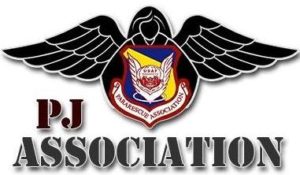Hosted by USAF PJ Association
 |
“It is my duty, as a member of the Air
Rescue Service, |
Pararescueman Killed in Action
Raymond J. CrowSergeant |
|
|
|
|
On 27 March 1972, Capt. David E. Pannabecker, pilot; Capt. Richard E. Dreher, co-pilot; Sgt. James Manor, flight Engineer; Sgt. Raymond J. Crow, Jr., pararescueman; and A1C Raymond A. Wagner, pararescueman; comprised the crew of an HH-53C Super Jolly Green Giant, Call Sign Jolly 61 on a morning escort mission into Cambodia. The aircraft departed Nakhom Phanom Royal Thái Air Force Base at 0830 hours as the #2 aircraft in a flight-of-two. Following aerial refueling over southern Thailand, the two Super Jolly's rendezvoused with the rest of their flight. Upon sighting the aircraft to be escorted, Lead radioed "Tally Ho," the signal acknowledging he had visual contact with the other aircraft. When there was no response from Capt. Pannabecker's helicopter, Lead attempted to locate him visually. After completing a 180-degree turn, Lead reported seeing a column of black smoke rising from the dense jungle 5 miles away. The location of the crash is 20 kilometers east of Siem Pang, Stoeng Treng Province, Cambodia. Small hamlets and villages were scattered throughout the area along with small clearings, rice fields and patches of bamboo. A Pararescueman from the second HH-53C was lowered to the ground at the crash site to check for survivors. During the PJs time on the ground, he could not approach near enough to the burning wreckage to determine if there were crew members trapped inside the aircraft due to the intense heat. The PJ searched the surrounding area and reported finding two partially deployed parachutes, but no trace of anyone who might have used them. The chutes were near the burning helicopter. Later that afternoon, a second PJ was deployed in the immediate area of the crash. He reported the fire was out and the aircraft had been completely destroyed. They also reported no remains were visible. There were no further attempts to locate or recover any crewmen from the downed Super Jolly Green due to the presence of hostile forces who had moved into the area. At the time the formal search effort was terminated, Richard Dreher, David Pannabecker, Raymond Wagner, James Manor and Raymond Crow were all declared Killed in Action/Body Not Recovered even though it was never conclusively determined if they all actually died in the crash. In December 1993, a US team under the auspices of the Joint Task Force for Full Accounting (JTFFA) investigated and conducted a site survey of Jolly Green 61's crash site. In addition to snaps, zippers, lap belts, adjustment buckles, a pilot's seat inflation bag, a metal set of parachutist wings, and parachute "D" ring, they found two data plates which are from the sleeve and spindle assembly of a HH-53C main rotor hub. Since no other HH-53C was lost within a 160-kilometer radius of this crash site, there is no doubt of its identity.
|
|
|
|
|
|
|
|